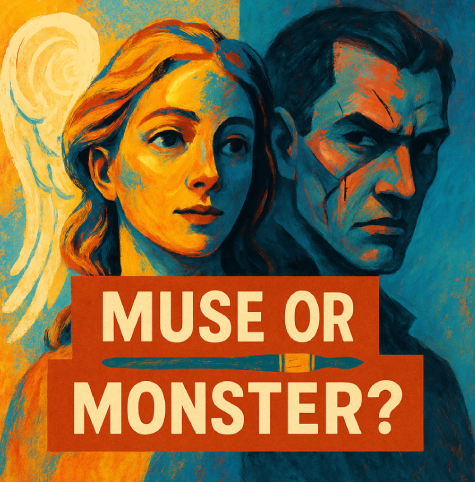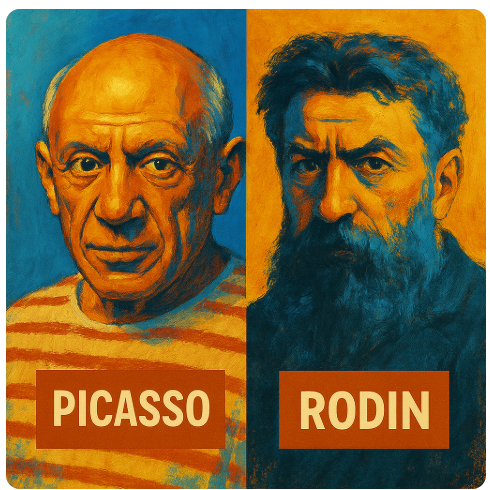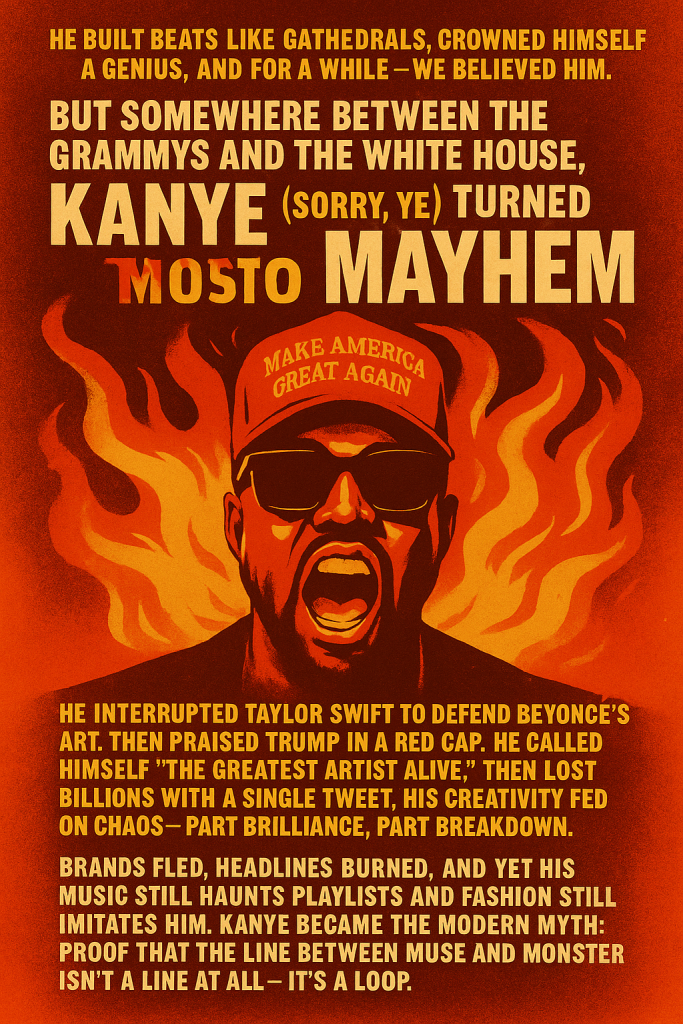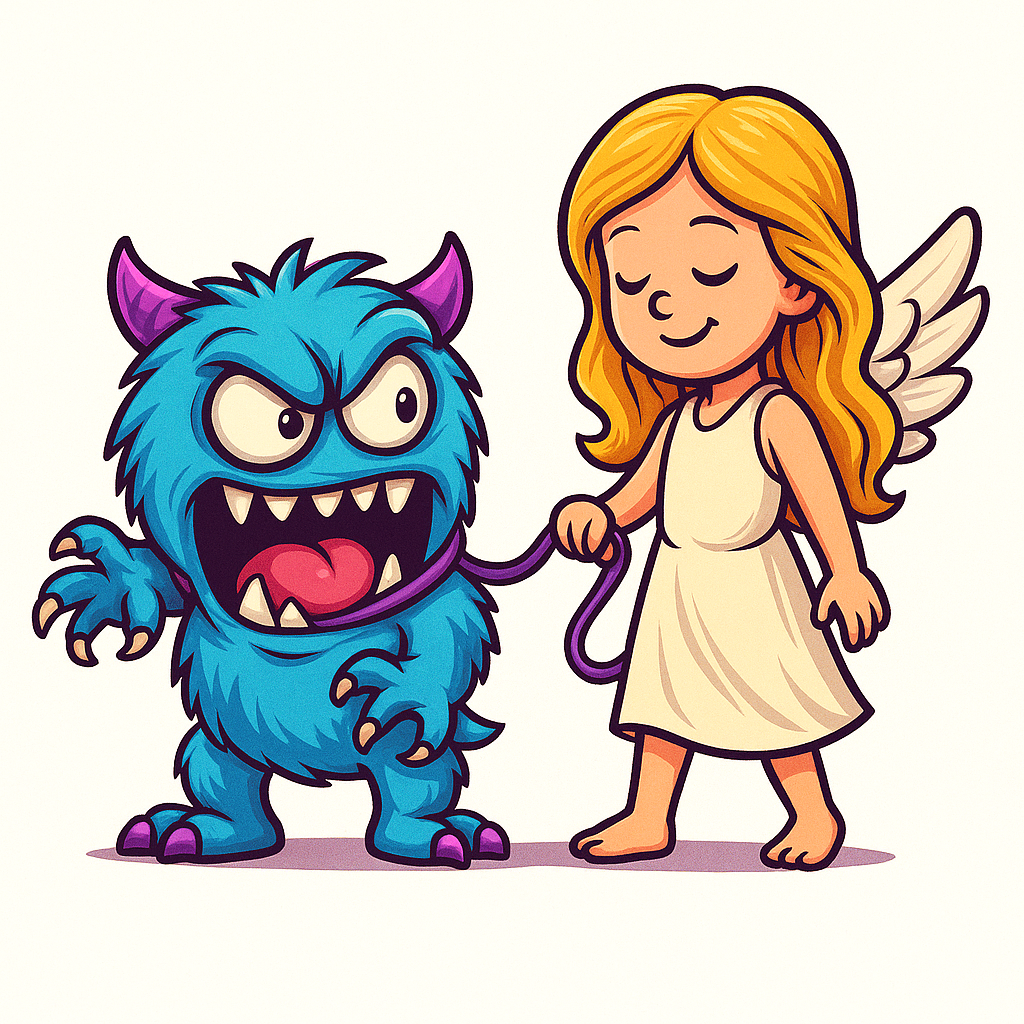Muse or Monster?

The People Who Make (And Break) Your Creativity
Got a friend who makes you feel like you could do anything — until suddenly you can’t do anything right? That’s when you meet a muse… or maybe a monster.
In every creative space — from art class to TikTok, from band practice to group projects — there’s someone who lights the spark and someone who snuffs it out. The trick is spotting which is which before they start living rent-free in your head.

In the old art world, the muse was the person who inspired the artist. Think Picasso and his crying Dora Maar, or Rodin and his talented assistant Camille Claudel — brilliant women consigned to footnotes in someone else’s story. [More about both in my book Conversations with Marvellous Muses
The “monster” was often the same person in a different mood: demanding, controlling, convinced that pain equals genius. Fast-forward to now, and we’ve merely traded paintbrushes for playlists, cameras, and start-ups.
Look around and you’ll see the same pattern everywhere. Steve Jobs was revered as Apple’s creative genius, but he also intimidated his team, forcing them to confront an unfamiliar reality.
Kanye West, one of the most influential and polarising figures in hip-hop and pop culture, built an empire on creative chaos — until the chaos took over. Taylor Swift flipped the script by owning her music, turning the “muse” myth inside out.
Or consider Ray Dalio, founder of Bridgewater Associates. His mantra of “radical transparency” forces colleagues to rate one another in meetings. Admirers say it fuels honesty and innovation; critics call it corporate combat. In Renaissance terms, Dalio might be both the visionary artist and the demanding patron — building a system that inspires some and exhausts others.
Even outside finance and tech, these archetypes thrive. The creative director who turns every brainstorm into theatre. The CEO whose charisma lights up a room but leaves scorch marks when things go wrong. The team player who becomes the emotional engine of a project — the quiet muse who keeps everyone else creating.
The workplace, like art, runs on human chemistry. But we have choices that Rodin and Picasso didn’t. We can refuse to be trapped in roles of “genius” and “inspiration,” “monster and “muse.” We can create space for everyone to hold the brush.

And what about a monster? That’s the person who says “I love your vibe” and then starts copying it. The one who calls it “collaboration” but somehow gets all the credit.
Surprise! Sometimes the same person can be both muse and monster. Such hybrids push you, challenge you, make you better — until they start needing control more than connection. Every creative partnership lives on that thin line between energy and ego.
It’s easy to miss the warning signs. Not every monster comes with a health warning attached.

A monster usually starts by flattering you, and calls you “inspiring” because your spark feeds theirs. They’ll want you close — but not equal. They’ll talk about “our project” when they mean “my project that you made possible.”
Here’s the rule to remember: muses give you confidence; monsters make you question it.
So if someone makes you shrink instead of shine, it’s time to step back. You don’t need to be anyone’s muse to do great work. Be your own muse. Find the people who make your ideas bigger instead of smaller.
Because the truth is, everyone has both monster and muse energies inside them — the part that inspires and the part that controls. The challenge isn’t to kill the monster; it’s to keep it on a leash.
In the end, the muse and the monster are not two people — they’re two impulses that live inside every leader, every team, every creative act. Which one wins depends on how we treat each other.
Create with people who lift you up. Guard your spark. And when someone calls you their muse, smile — but make sure you still get to hold the brush.


